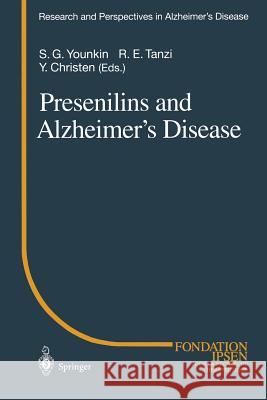Presenilins and Alzheimer's Disease » książka
Presenilins and Alzheimer's Disease
ISBN-13: 9783642721052 / Angielski / Miękka / 2012 / 100 str.
Molecular and biochemical studies of Alzheimer's disease have recently under gone a major revolution with the discovery of the presenilin genes. Since 1995 when these genes were first identified to carry defects responsible for up to half of early onset familial Alzheimer's disease cases (Sherrington et al. 1995; Levy-Lahad et al. 1995), over 50 Alzheimer-associated mutations have been found in the prese nilin genes, PSI and PS2 (reviewed in Tanzi et al. 1996). Over 200 papers have been published regarding the characterization of the presenilins. Not since the amyloid protein Precursor (APP) was isolated in 1987 (Kang et al. 1987; Goldga ber et al. 1987; Robakis et al. 1987; Tanzi et al. 1987) has the discovery of novel genes had such an impact on the field of Alzheimer's disease research. To whit, five separate sessions at the 1997 Society for Neuroscience Meeting are devoted solely to studies of the presenilins. The presenilins genes have clearly taken the field of Alzheimer's disease research by storm and appropriately so since defects in these genes can cause Alzheimer's disease as early as in one's late twenties. One of the greatest revelations to arise from molecular studies of the preseni lins is the finding that, like the familial Alzheimer's disease mutations in APP, the mutations in the presenilin genes lead to increased production and secretion of the longer form of the A peptide, A 42 (Scheuner et al."











